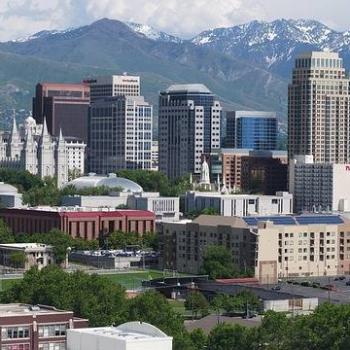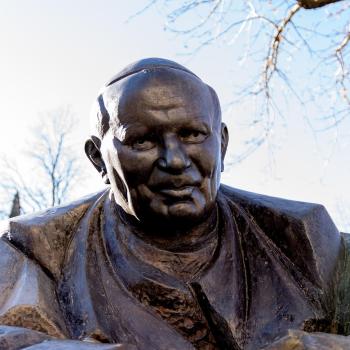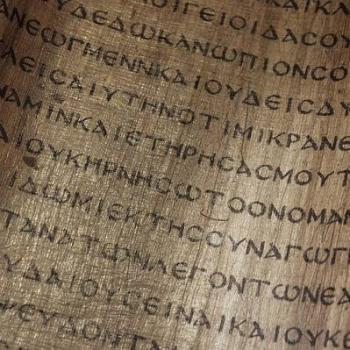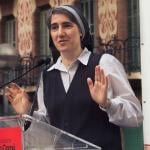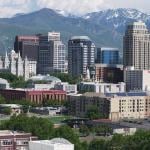BOBBY ASKS:
Who are the “Mainline” Protestants today?
DOUGLAS LIKEWISE ASKS:
(Paraphrasing) What do we make of proposals for “Mainline” Protestants to drop that label for themselves? And where does that leave me, an “evangelical” who remains in the Episcopal Church “as a grain of sand in the oyster”?
THE GUY ANSWERS:
The dictionary definition of “mainline” signals mainstream prestige, so “Mainline” Protestantism’s decline over recent decades could mean this designation has long since outlived its usefulness. Douglas considers it “adjectival mayhem.” The discussion has been renewed by the “Christian Century” magazine, often considered the bible of the Mainline or at least of the Mainline Left, such that Elesha Coffman’s new history is titled “The Christian Century and the Rise of Mainline Protestantism” (from the excellent Oxford University Press). The book provoked a piece for the “Century” by Carol Howard Merritt urging fellow “progressives” to rebrand: “It’s time to discard that tired label that ties us too closely with a particular race and class. It’s time to call forth another name.” Gary Dorrien of Union Theological Seminary agreed via “First Things” magazine that the Mainline was “unfortunately named” and “liberal” or “ecumenical” would be “slightly better” adjectives.
Some context: The inexorable shrinkage among Mainline Protestant churches since the 1960s — and simultaneous growth among non-Mainliners, though lately plateauing in some cases — is a sweeping trend that has reshaped American religion. It ranks in significance with the large influx of immigrant Asians and Hispanics. The origins of the commonly used Mainline label are obscure (anyone have information on that?). But it certainly raises thoughts of suburban Philadelphia and “Establishment” standing. The Guy’s definition: The predominantly white, long-existing, and relatively affluent U.S. Protestant denominations with pluralistic theology, which are easily categorized by ecumenical affiliations with the National Council of Churches and World Council of Churches (alongside major African-American and Orthodox denominations).
We’re talking about (in order of size) the United Methodist Church, Evangelical Lutheran Church in America, Presbyterian Church (USA), Episcopal Church, American Baptist Churches, United Church of Christ, Christian Church (Disciples of Christ), and several smaller bodies. Together they remain an important bloc with 20 million adherents, but that compares with 30 million at the end of the 1960s, an unprecedented slump as memberships both declined and aged.
Meanwhile, these groups generally floated leftward. At some point the Protestant majority shifted outside the Mainline to a loose collection consisting of Evangelicals, Fundamentalists, Pentecostals, Charismatics, churches bound by traditional creeds, countless independent congregations, and minor schisms off the Mainline. Informal worship, bands with ear-splitting amplifiers, clever programming and marketing may explain some success more than theology. But there’s little doubt that leaders confident in their conservative beliefs about Jesus Christ and the Bible have been all-important. Think of it as the Billy Graham Era (though the Southern Baptist evangelist, who turns 95 on November 7, welcomed hosts of Mainline supporters).
Dorrien thinks Coffman’s history supports the “cultural victory” thesis, “that liberal Protestantism succeeded by insinuating its values into American culture.” Win the cultural war for gauzy tolerance and sophistication. Lose the religious battle. That’s cold comfort for pastors and lay leaders trying to preserve their local congregations.
Cathy Lynn Grossman of Religion News Service suggests replacement labels, some of them tongue-in-cheek: “Old Line,” “Liberal Church,” “Grandma’s Church,” “Christians-Formerly-Known-As-Mainline,” “New Coke,” “Vintage Protestants,” “VPCC: Vanishing Progressive Christian Church,” “Legacy Church,” or else let’s “forget labels” altogether. Asked to pick their favorite, 24 percent of R.N.S. readers said “Liberal Church.”
Problem is, that’s an L-word many Mainline strategists prefer to shun, even when it applies. More important, scads of Mainliners are conservatives like Douglas. Pew Research Center surveys show “traditionalists” in belief are one-fourth of today’s Mainline members. Despite ongoing conservative walkouts, Mainline Evangelicals akin to Douglas cherish their church heritage though oftentimes — yes — treated as the irritating “grain of sand in the oyster” rather than appreciated as a useful source of spiritual energy, not to mention offering-plate money.
Would The Guy drop the old label now that the Mainline is on the sidelines? Probably not. It has long been in use, there’s no good agreed alternative, and it accurately depicts historic cultural positioning (for instance, scan the affiliations of the Protestants in Congress). But admittedly the label is offkey in terms of 21st Century U.S. church dynamics. Oh, and despite its huge membership Catholicism isn’t the American mainline, either.




